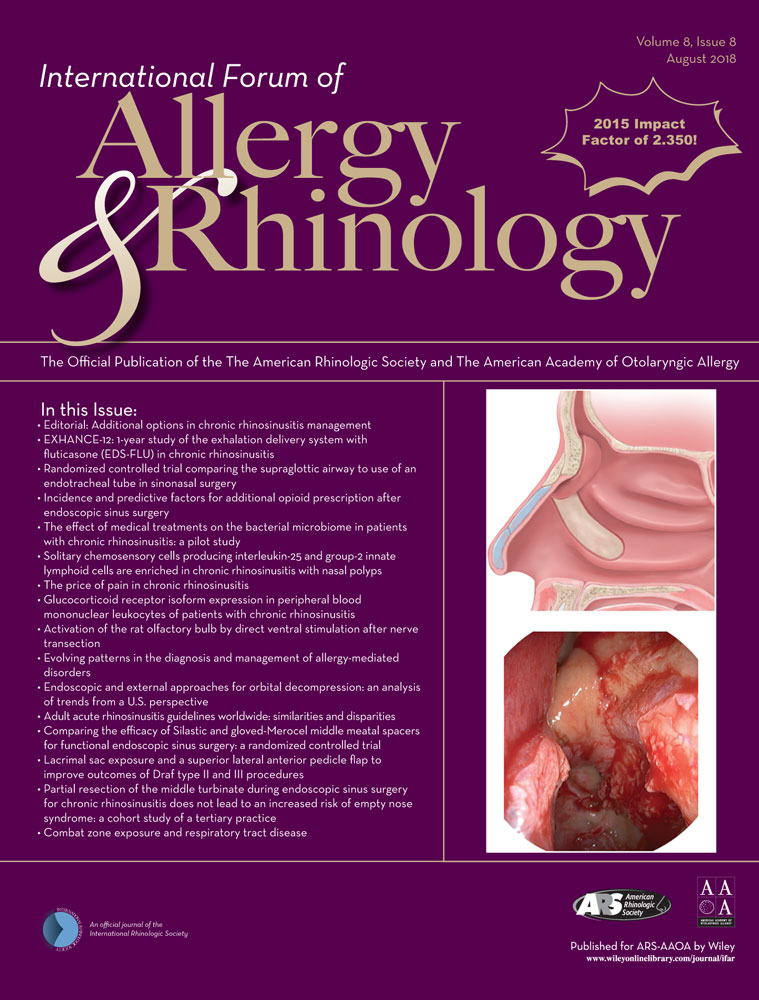The price of pain in chronic rhinosinusitis
Potential conflicts of interest: R.R.O., consultant for Medtronic; J.A.A., consultant for Medtronic, Spirox, Optinose, and GlycoMira Therapeutics.
View this article online at wileyonlinelibrary.com.
Abstract
Background
Chronic rhinosinusitis (CRS) is associated with productivity losses exceeding US$13 billion annually. Although pain is well known to significantly affect patient productivity in other diseases, its economic impact on CRS-related lost productivity has not been examined. The objective of this study was to determine whether CRS-related facial pain correlates with lost productivity in patients with CRS.
Methods
Seventy patients with CRS were enrolled in a cross-sectional investigation. Patients with a history of systemic inflammatory disease, ciliary dysfunction, chronic pain syndromes, migraines, and fibromyalgia were excluded. Pain was measured using the Brief Pain Inventory Short Form (BPI-SF) and the Short-Form McGill Pain Questionnaire (SF-MPQ). Presenteeism, absenteeism and lost work, and household and overall productivity were assessed. Regression analysis was performed to assess potential confounders, including depression.
Results
Pain as measured with BPI-SF and SF-MPQ total scores correlated with all domains of productivity losses. Overall, lost productivity was significantly correlated with pain (R range, 0.354-0.485; p < 0.001). Presenteeism (reduced work efficiency) had the highest correlation with all of the overall pain scores (R range, −0.366 to −0.515; p < 0.001). Lost household productivity time was the least affected by pain (R range, 0.267-0.389; p < 0.05). These correlations remained statistically significant after regression analysis, which accounted for depression (p < 0.05).
Conclusion
A significant correlation exists between CRS-related facial pain and productivity losses in patients with CRS that is independent of depression. Facial pain has the strongest correlation with presenteeism, which is the main driver of productivity losses and indirect costs associated with CRS.




